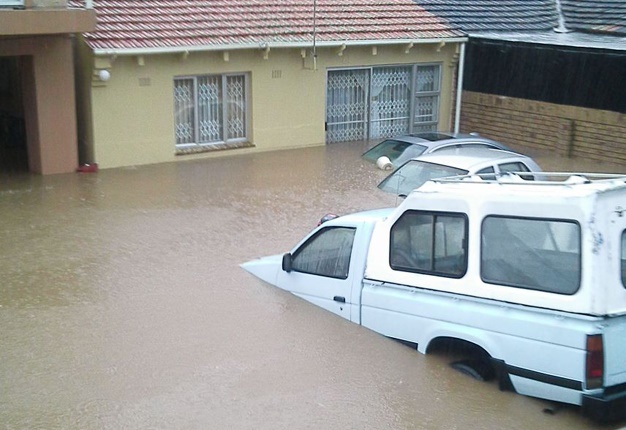
Many parts of South Africa are feeling the full effects of Winter, with torrential downpours wreaking havoc on our roads in July. After a blazing summer that saw especially crops and animals succumb to the heat, the much-needed water is not unwelcome. However, though the rain is appreciated and accepted, certain areas, such as KwaZulu-Natal are experiencing severe flooding and motorists are not hesitant to wade through the water.
Driving through water can be incredibly dangerous and cause serious damage to your vehicle.
Read our guide on dealing with flooded roads and adverse weather conditions:
13 tips for driving in the rain:
1 Always turn on your vehicle’s headlights in wet weather.
2 In heavy rain use the brighter (rear fog lights) setting for your car’s tail lights.
3 Make sure your wiper blades are in good condition and do a clean sweep.
4 Do not allow the inside of your car's windows to mist up. Switch on front and rear screen demisters and your air-con - yes, an air-con dries the air and removes mist almost instantly.
5 Check your tyre tread: the legal minimum is 1mm but for safety's sake make sure it's treble that.
6 Worn shock-absorbers don't keep the rubber hard down on the road; no road contact = no ABS, no grip and very little braking.
7 Cloudy and rain = poor visibility. Take extra care when overtaking - and remember not all drivers coming towards you will have their headlights on.
8 Adjust speed and following distance; at least six seconds to the car ahead. Ensure you can stop within the visible area ahead.
9 Avoid abrupt acceleration, braking and steering which can result in a skid.
10 Don't drive through deep water. It could damage your car and possibly cost you your life.
11 If you have no option but to drive through such water, then drive slowly in a low gear, holding the steering wheel steady.
12 After driving in heavy rain allow your brakes to dry - especially if your vehicle has drum brakes.
13 If you experience car/bike trouble turn on your hazard lights and try to move completely off the road. If possible, ensure that you have a reflective warning triangle to erect some distance behind your vehicle.
The dangers of rapid, flowing water on our roads: List provided by Arrive Alive
• Flowing water applies pressure to contact areas. The higher the speed the higher the pressure.
• With water that is 1m high it will flow out at a speed of 4.47 meters per second or 16km/h.
• Water that has fallen only 0.4m reaches a speed of 3.2km/h and can sweep a car off a road bridge.
• When water touches the underside of a vehicle, depending on the strength of the flow, it can lift a vehicle and even carry it away.
• A water depth of only 0.6m can float a car.
















